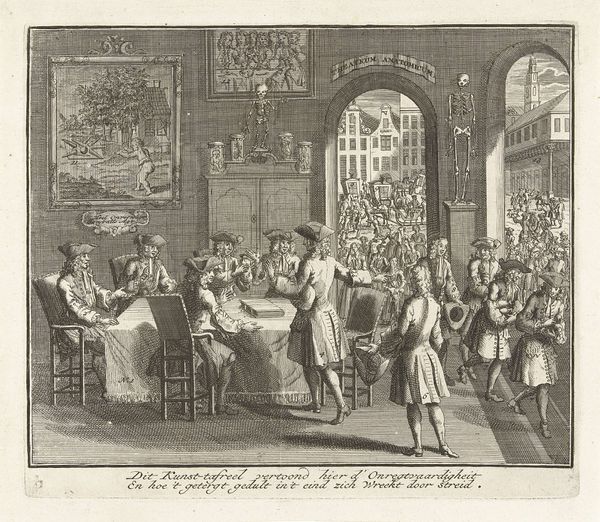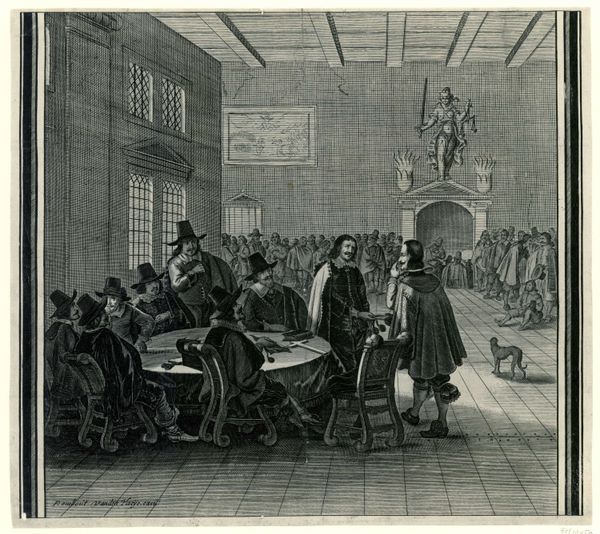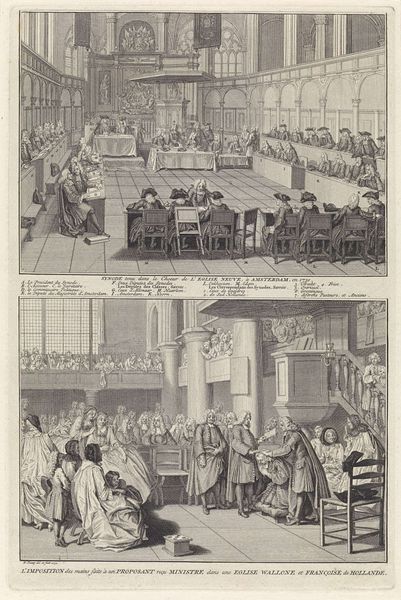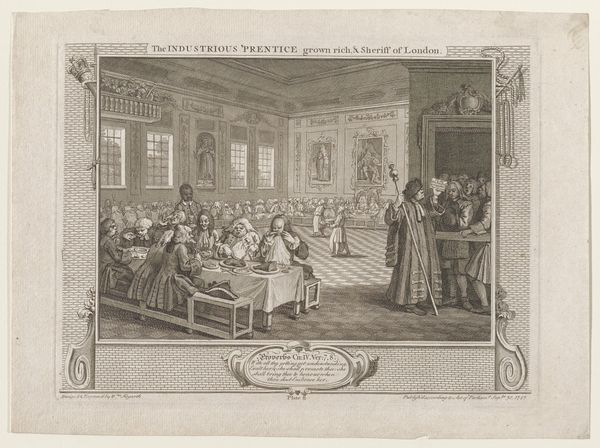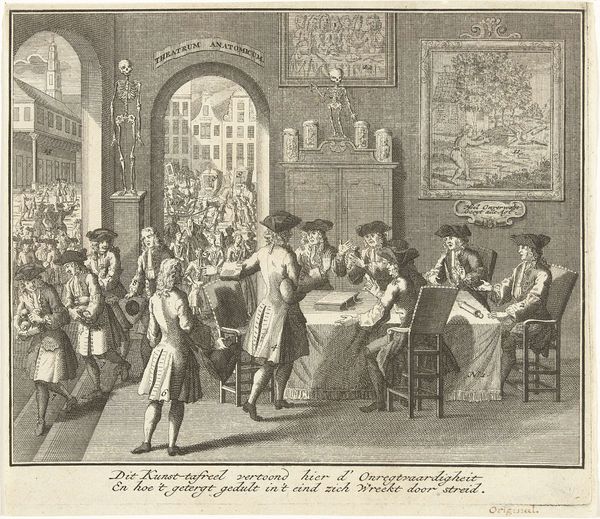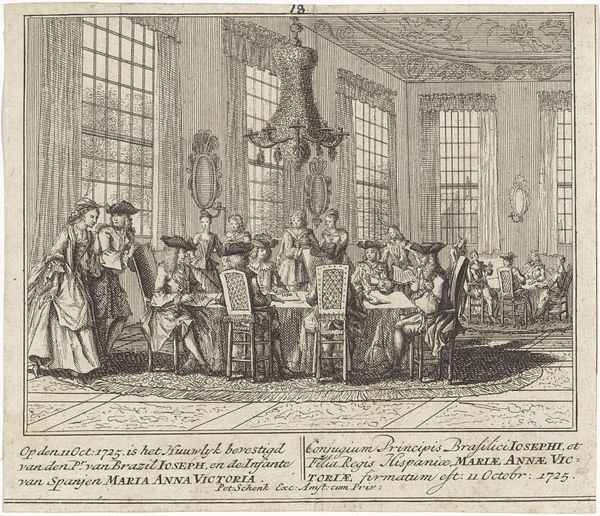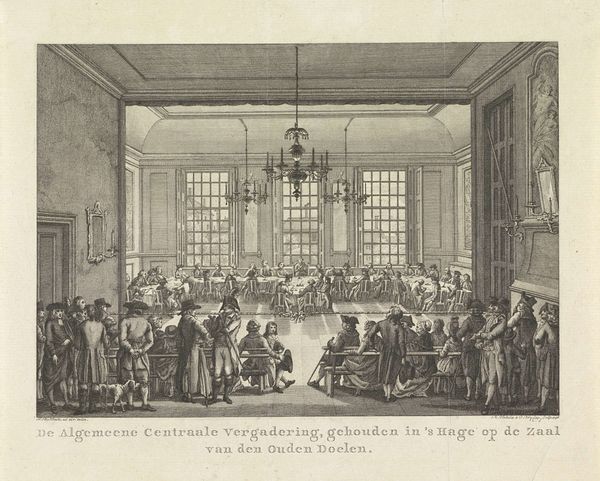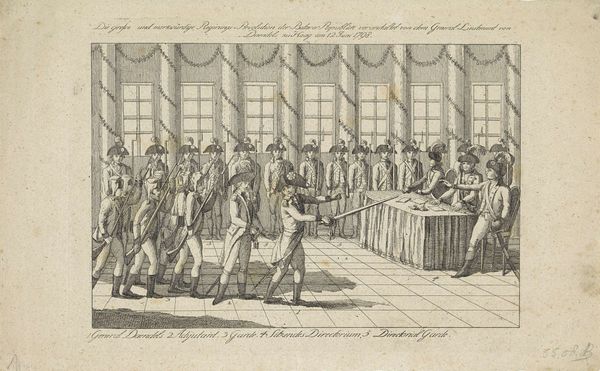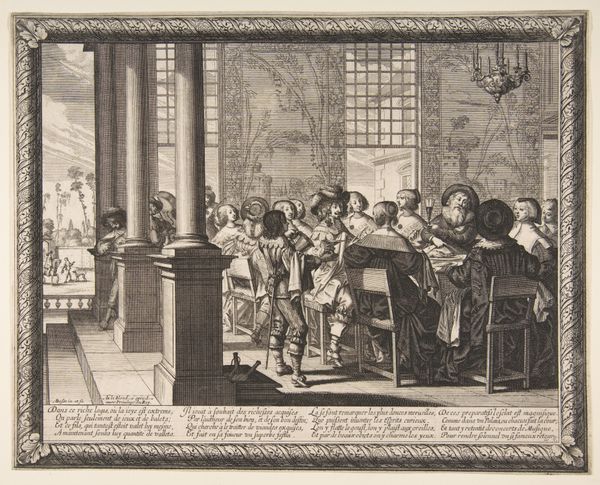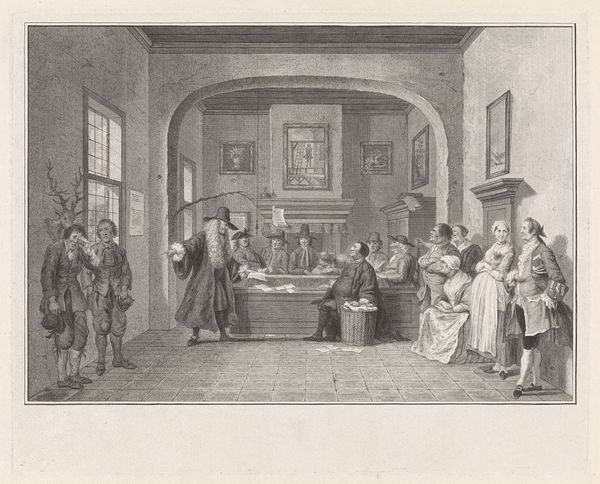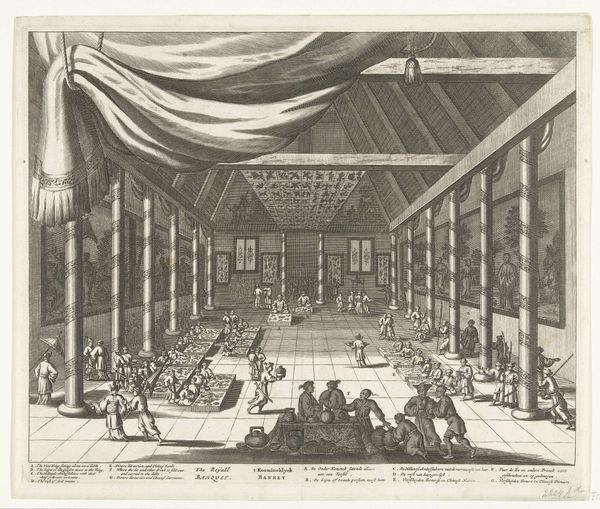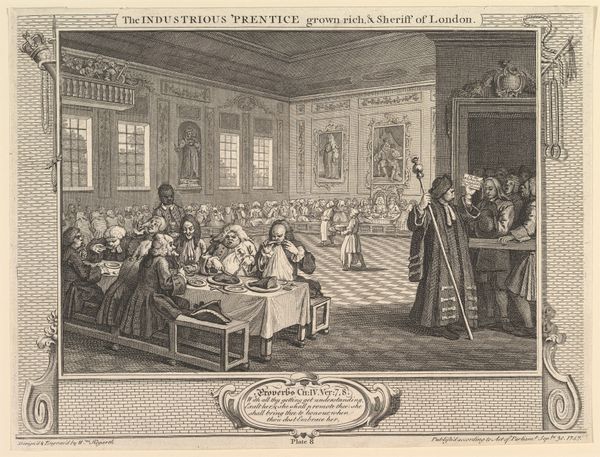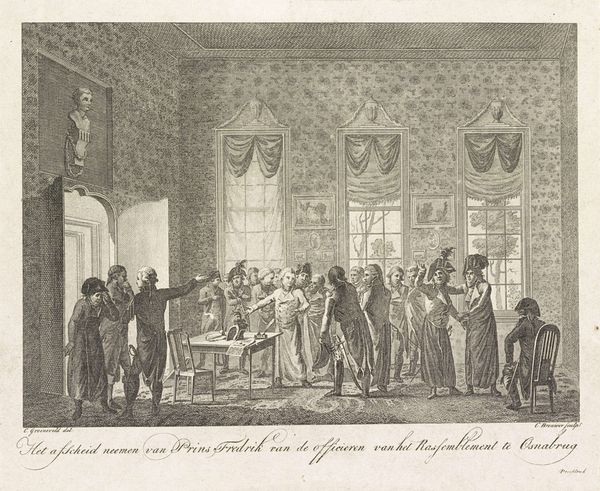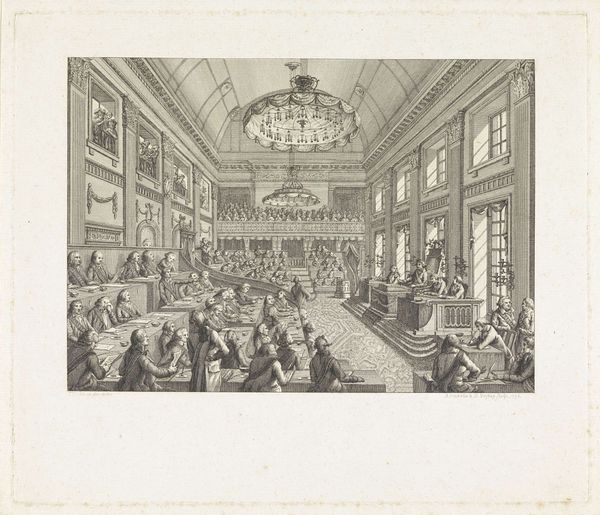
paper, engraving
#
portrait
#
baroque
#
paper
#
line
#
genre-painting
#
history-painting
#
engraving
Dimensions: height 163 mm, width 209 mm
Copyright: Rijks Museum: Open Domain
Curator: Welcome. Here at the Rijksmuseum, we’re standing before Pieter Tanjé’s “Bijeenkomst van de Collegianten,” or “Meeting of the Collegiants,” created between 1736 and 1738. It’s an engraving, a detailed print rendered on paper. Editor: It's stark. The grayscale lends a certain solemnity, doesn't it? And all those lines, a real study in texture and form. It feels very formal and somewhat…imposing. Curator: Absolutely. Tanjé has meticulously depicted this gathering, prioritizing a precise linearity. Consider how he uses hatching to delineate depth and shadow, structuring the visual space and guiding the viewer's eye. The verticality established by the architectural elements is undeniable. Editor: But what strikes me is the assembly itself—the production of the image versus what’s represented. The rigid order of the room versus the individual clothing styles, for example, indicate differing social strata united within this religious gathering. It reminds me of images of early Quaker meetings, though the women seem more finely dressed here. Curator: Yes, the composition draws us into the social dynamic within the room—but not without aesthetic consideration. There's a considered balance between the crowded benches and the airy upper space. The artist carefully arranges figures in relation to one another to reinforce narrative clarity, using the principles of Baroque visual rhetoric. Editor: Precisely. Rhetoric visualized! We can read much about 18th-century social hierarchies and dissenting religious practices simply by examining Tanjé’s engraving tools, his line weights, and how effectively this print, intended for wide distribution, represents this religious community. Paper wasn't cheap then either! Curator: The very deliberate line work, the organization of visual space, it's all incredibly sophisticated. To understand this piece fully is to appreciate its delicate balance. Editor: I agree. It’s fascinating how a work intended for distribution can offer such a complex interplay of the hand-made process and religious tensions within 18th-century Dutch society. I now understand its value within this collection.
Comments
No comments
Be the first to comment and join the conversation on the ultimate creative platform.
